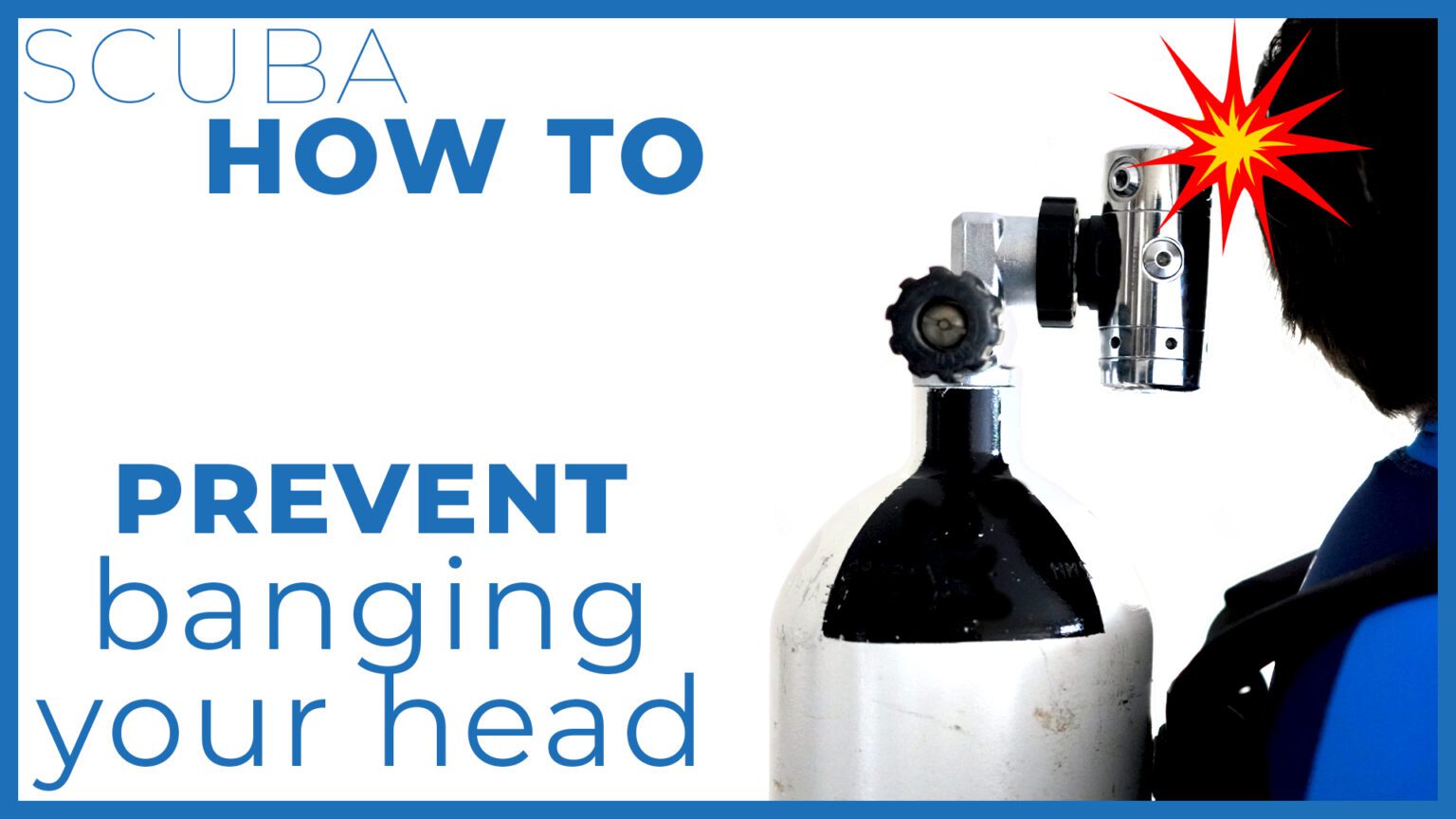Hey Gang, welcome to Scuba Diver Magazine, somebody asked me a little while ago how to prevent their 1st stage from banging the back of their head during a dive when they look upwards. And this is a fairly common problem because you dive with a single scuba cylinder, strapped to your back, in line with the back of your head with a chunk of metal right near the back of your head.
If you’re lucky you’ll notice it by just looking up but, some divers can really crack their head on it during entry. Now, there is good news, there are several things that you can do to help prevent banging your head on your 1st stage. So, lets dive straight in.
Inverted 1st Stage
The first thing that you can do with some 1st stages is to invert it. A lot of scuba 1st stages are set up straight out of the box with the bulky section of the 1st stage pointing upwards. So, that’s just adding an extra inch or so of metal closer to your head.
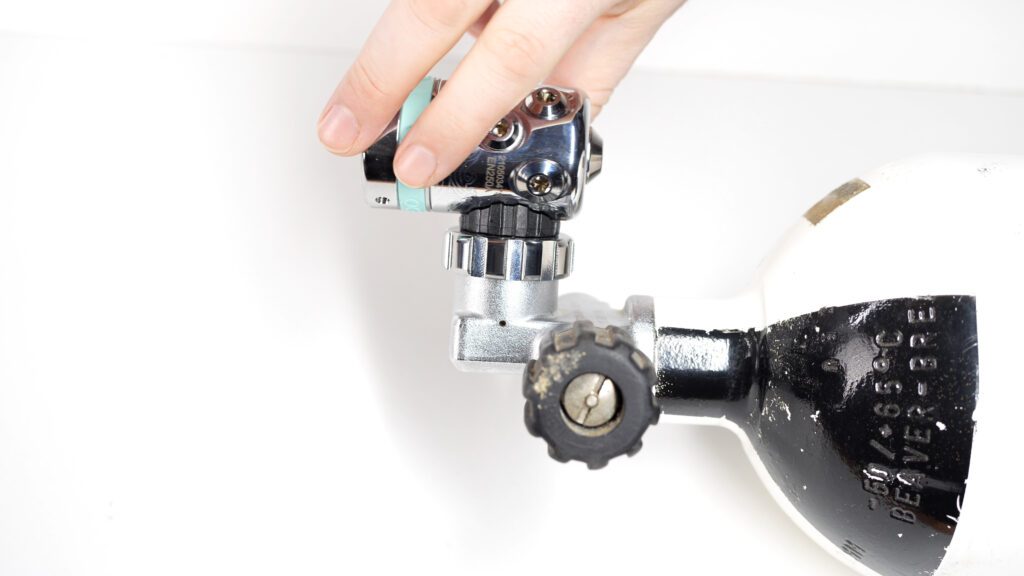
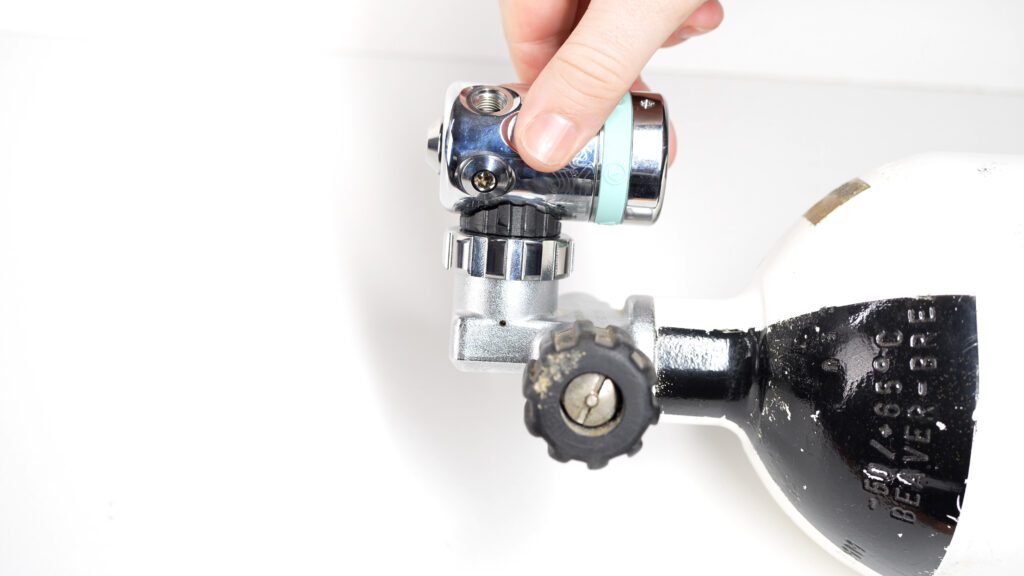
Now, you can’t do this with every 1st stage design but, if your 1st stage is larger on one side, you can unscrew the hoses and swap them to the other side, it will still work just the same but now it’s more in line with the cylinder valve itself instead of sticking upwards. As soon as I get a new regulator this is usually the first thing that I do is remove the hoses and invert the 1st stage.
Cylinder Height
This one gives you a lot of adjustment for height and a lot of divers mount their BCD too low on their tank or mount their cylinder too high on their scuba BCD depending on your perspective. Moving the tank band further up the cylinder moves that 1st stage further from your head but, you don’t want them too low so the bottom of the tank doesn’t start hitting your legs. Some Modern BCD designs almost encourage you to mount tanks too high because they have two cam bands and to get the upper band in position the cylinder has to be really high up.
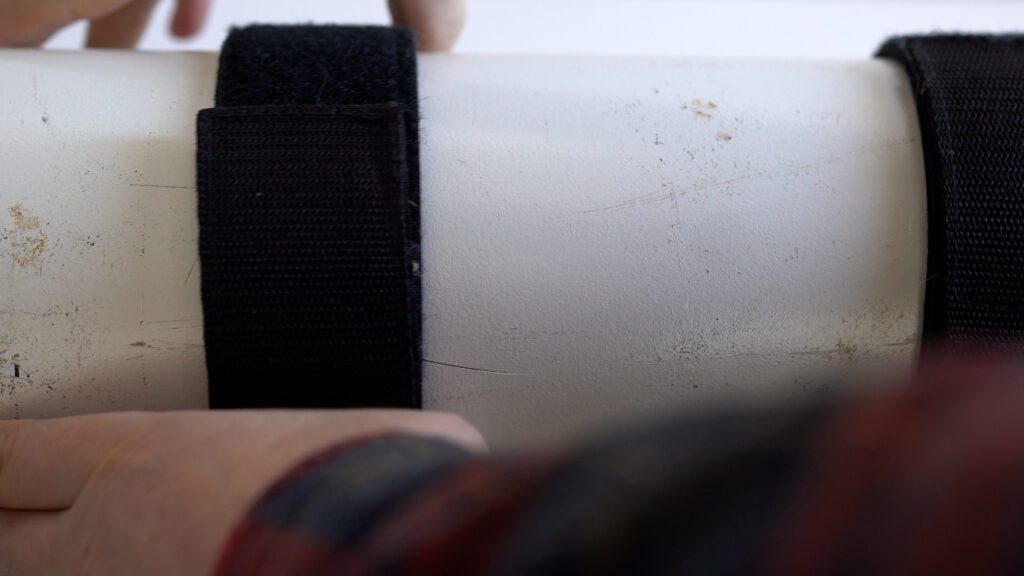
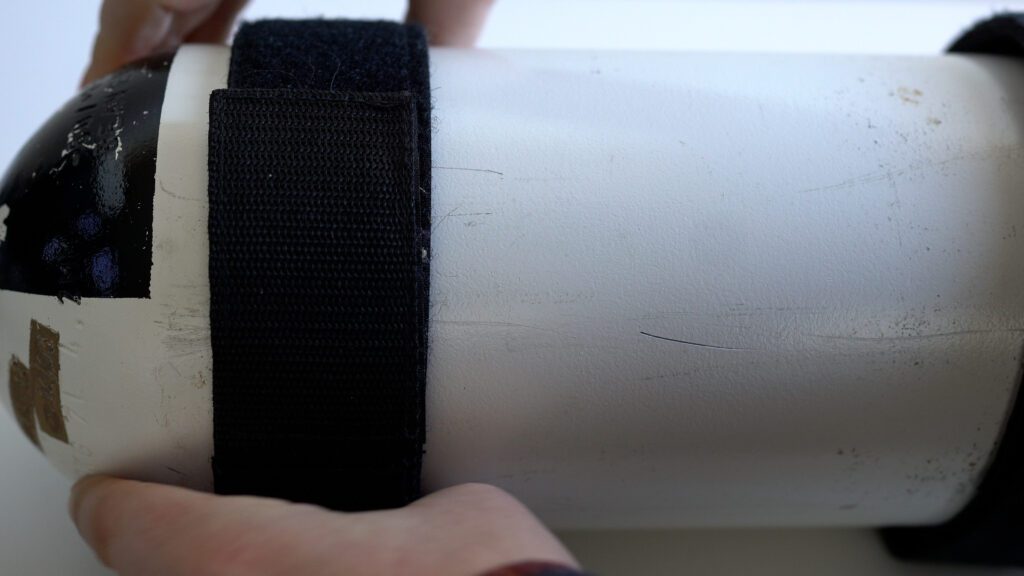
I used to recommend the neck of the cylinder level with the top part of your scuba BCD and that way the 1st stage sits in the crook of your neck but, that depends on where the tank bands are on your BCD and the design of your cylinder. You want your cylinder quite low but do make sure that the cam bands are secure at least a half inch below where the shoulders start to round and bear in mind that too low can adjust your trim. But, this is usually the thing that affects divers with their tank too high up.
Drysuit Look
One useful thing that comes with drysuit diving is to look with your shoulders not your neck. Scuba Drysuits have a watertight neck seal but, if you turn your head or worse look up, then you can shift that seal and let water in. To combat this, you’re usually taught to turn and look with your shoulders and if you need to look up, then don’t lift your chin.
The same thing will help you prevent banging your head in the water. It’s more of a thing that I just do now, and it can’t substitute the previous two things mainly because of entries. Roll back or giant stride you need a bit of space but, try to keep your chin down during entry as that’s when you can really hurt yourself by clunking your head.
Adjust Harness
If you’re diving a backplate and wing setup and the 1st stage is hitting the back of your head, then your harness may need adjusting, worst case you may need a different scuba backplate. It’s balancing act, you want the shoulders to hold the backplate close to your back, but, not too high up on your shoulders or too close to your body and your crotch strap can help with this.
If your shoulder straps and waist band don’t hold your BCD in place and it can ride up then your crotch strap can help to hold it down in place, especially on the surface when your BCD is inflated. If you’ve tried everything else, it may be worth adjusting your shoulder straps so it all sits a bit lower on your back.
Hoods can be nice to add a little cushioning but, the main two are cylinder height and 1st stage design and positioning. Cylinder and valve design can sometimes help, if the tank has large shoulders and the valve itself is quite long then there’s not much you can really do unless you have a choice of tanks and valves but, try to think about how high or low you’re mounting your cylinder if you find you clonk your head all the time.
If you have any helpful tips that you’ve come across over the years pop them down in the comments under this for other scuba divers to consider.
